Battle of Steenbergen (1583) facts for kids
Quick facts for kids Battle of Steenbergen (1583) |
|||||||
|---|---|---|---|---|---|---|---|
| Part of the Eighty Years' and Anglo-Spanish wars | |||||||
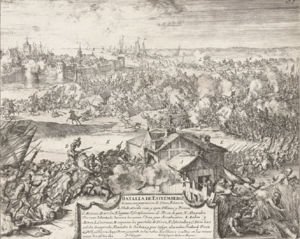 The Battle of Steenbergen, engraving by Juan de Ledesma and Romeyn de Hooghe (1670–1699). National Library of the Netherlands. |
|||||||
|
|||||||
| Belligerents | |||||||
| Commanders and leaders | |||||||
| Casualties and losses | |||||||
| At least 3,200 casualties | 400 dead or wounded | ||||||
The Battle of Steenbergen happened on June 17, 1583. It took place in Steenbergen, which is now part of the Netherlands. This battle was a big win for the Spanish army.
The Spanish forces were led by Don Alexander Farnese. He was the Governor-General of the Spanish Netherlands. They fought against French, English, and Dutch soldiers. These combined forces were led by French Marshal Armand de Gontaut, Baron de Biron and English commander Sir John Norreys.
This battle was part of two major conflicts: the Eighty Years' War and the Anglo-Spanish War (1585–1604). The Spanish victory at Steenbergen had a huge impact. It led to Francis, Duke of Anjou leaving the Netherlands.
Contents
What Led to the Battle of Steenbergen?
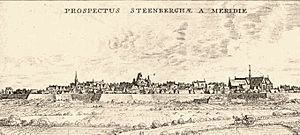
Before this battle, the French, Dutch, and English armies had tried to help the city of Eindhoven. They were led by Marshal Armand de Gontaut, Baron de Biron. But they failed to break the siege.
After this, Marshal Biron moved his army. They went north of Roosendaal, between Breda and Bergen op Zoom. On May 10, they captured the castle of Wouw.
Meanwhile, the Spanish leader, Prince of Parma, kept moving forward. He secured Eindhoven and continued his advance. Part of his army went to Namur. Other Spanish troops, led by General Karl von Mansfeld, captured several towns. These included Turnhout, Hoogstraten, and Diest.
From Namur, the Prince of Parma tried to capture Herentals. But he gave up that siege. Instead, he moved to face Marshal Biron's forces near Roosendaal. When Biron heard the Spanish were coming, he moved his army. They went to the area outside Steenbergen. On June 17, the Spanish arrived, and the battle began.
The Battle and Capture of Steenbergen
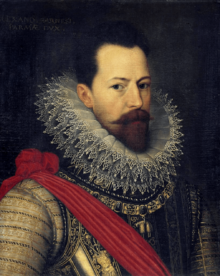
The combined French, English, and Dutch forces had more soldiers. But the Spanish army quickly defeated them. The Spanish cavalry (soldiers on horseback) attacked first. Then their infantry (soldiers on foot) followed.
The Spanish also had powerful guns. These were used very well by Don Hernando de Acosta. He was in charge of the Spanish artillery (big guns). His cannons played a very important role in the battle.
The forces led by Biron and Sir John Norreys suffered heavy losses. At least 3,200 of their soldiers were killed or wounded. The Spanish captured almost all their supplies. This included gunpowder, 36 flags, and 3 banners. The Spanish army had far fewer casualties, with only 400 dead or wounded.
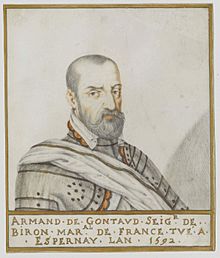
Marshal Biron himself was hurt during the battle. He fell from his horse and broke his leg while trying to fight back.
The combined army was almost completely destroyed. The remaining soldiers retreated in a messy way. They went to the fortress of Bergen op Zoom and other towns. These towns were controlled by the Dutch rebels. The Spanish troops then easily took control of Steenbergen.
A few days later, the defeated army faced more problems. The French soldiers, who were mostly Catholics, did not get paid. There were also disagreements between them and the Dutch and English Protestant troops. Even the Dutch and English commanders argued. Because of these issues, hundreds of Biron's soldiers left the army.
What Happened After the Battle?
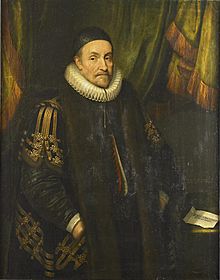
The Battle of Steenbergen was a huge victory for Spain. They had fewer casualties and gained a lot strategically.
The defeat made it impossible for Francis, Duke of Anjou to stay in the Low Countries. He was a French leader who had been helping the Dutch. He left the Netherlands by the end of June. This loss was a big setback for the Dutch Protestants. It also made William of Orange, who supported Anjou, look bad.
The Spanish army continued to advance. The Prince of Parma moved towards Dunkirk. This city was already blocked by Spanish forces led by Don Cristóbal de Mondragón. On July 16, the Spanish began bombarding Dunkirk. A few days later, the city surrendered to the Spanish. Nieuwpoort also surrendered on July 23.
The Spanish army kept moving forward. They considered attacking the port city of Ostend. But they decided not to. Instead, most of the army went to Diksmuide, which surrendered on August 1. At the same time, a smaller Spanish group captured Veurne and Menen.
See also
 In Spanish: Batalla de Steenbergen para niños
In Spanish: Batalla de Steenbergen para niños

